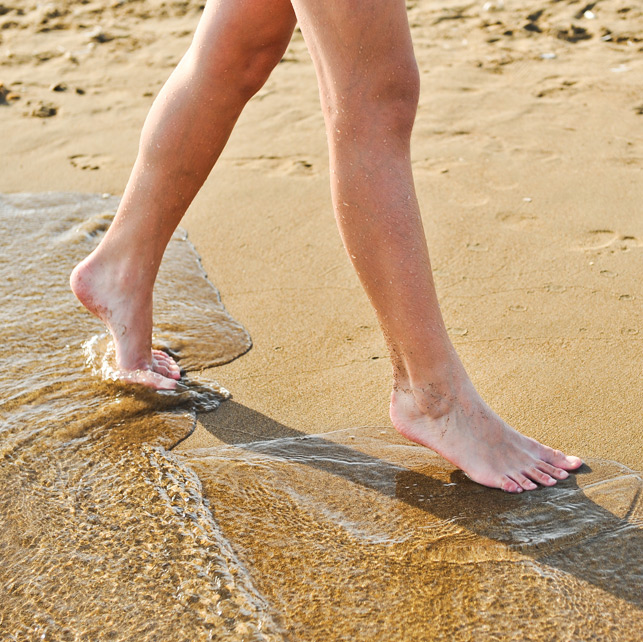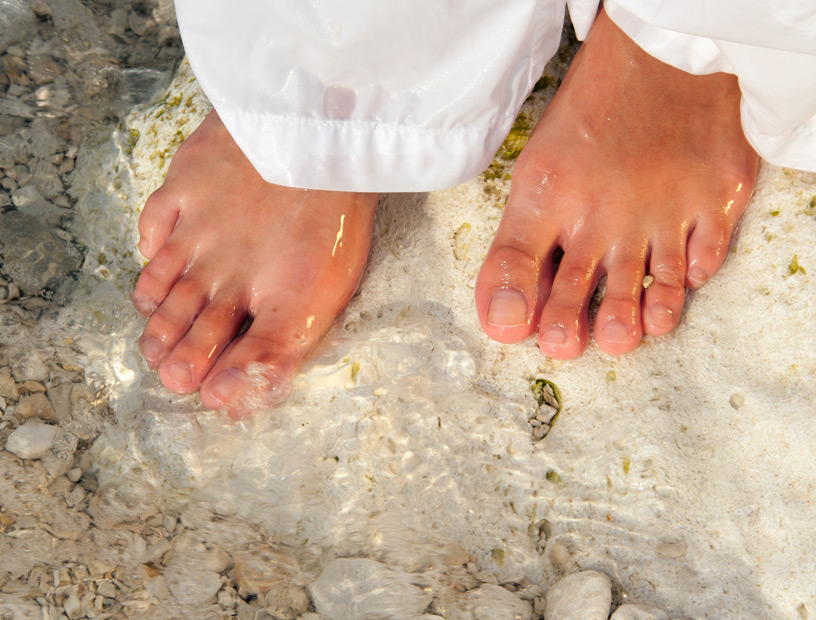
Find treatment for bunions at Orange County Orthopedic Clinic.
Affecting the inside of the joint of the big toe, bunions (hallux valgus) are an often-painful bony bump on the foot. While anyone can develop bunions at any age, the condition is more common in women.
- Bunions tend to develop slowly and sometimes cause the big toe to lean in towards the adjacent one
- The resulting deformity can make it difficult to walk or wear shoes without pain
- Treatment is often non-surgical
Causes & Symptoms
Bunions usually form when the big toe is out of place or when there are structural changes to tissues supporting the toe. Tight shoes that consistently move the big toe out of alignment, even if it’s only on a temporary basis, can also cause a bunion to form. The resulting imbalance causes the joint of the big toe to become unstable.
Anything that causes the foot to remain in an unnatural position can be a contributing factor to the development of bunions. Heredity may also play a role for people who are born with some type of foot deformity, especially one that affects the big toe or nearby joints and bones. Underlying inflammatory conditions, such as arthritis, may also contribute to the formation of bunions.
The most common symptom of a bunion is the appearance of a visible bump on the big toe that can be vary in size. Less obvious symptom may include pain that becomes progressively worse or discomfort that becomes evident when wearing shoes, walking, or even when putting on snug socks or slippers. Patients may also notice:
Pain and tenderness
Inflammation or visible redness
A callus where the bump is starting to appear
Limited motion of the affected toe
Stiffness in the affected area

Treatments
You may be referred to an orthopedic specialist for treatment of problematic bunions that aren’t going away fairly quickly, or if the resulting deformity is causing severe pain. While a foot exam can usually confirm the presence of a bunion, X-rays may be taken to determine the extent of damage to the MTP (metatarsophalangeal) joint.
Initial treatment often involves changing footwear, padding to cushion the area where the bunion is located, and custom shoe inserts, or orthotics. Toe spacers may also be placed between the big toe and the adjacent toe to minimize pressure as the joint heals.
If there is swelling and inflammation, applications of ice several times a day at 20 minute intervals may provide relief. Medication prescribed may include non-steroidal anti-inflammatory drugs (NSAIDs) such as naproxen and ibuprofen. Surgery is only recommended if conservative treatments aren’t providing relief or if the deformity is severe.
Avoiding excessively tight and narrow shoes can help prevent the development of bunions. High-heeled shoes, in particular, can place added pressure on the big toe joint. Instead, opt for wider shoes with enough room at the top for the toes to move comfortably. If you begin to experience persistent pain, even before a bunion develops, see a doctor to determine if there are steps you can take to ease your discomfort.
on caring for specific orthopedic needs.

